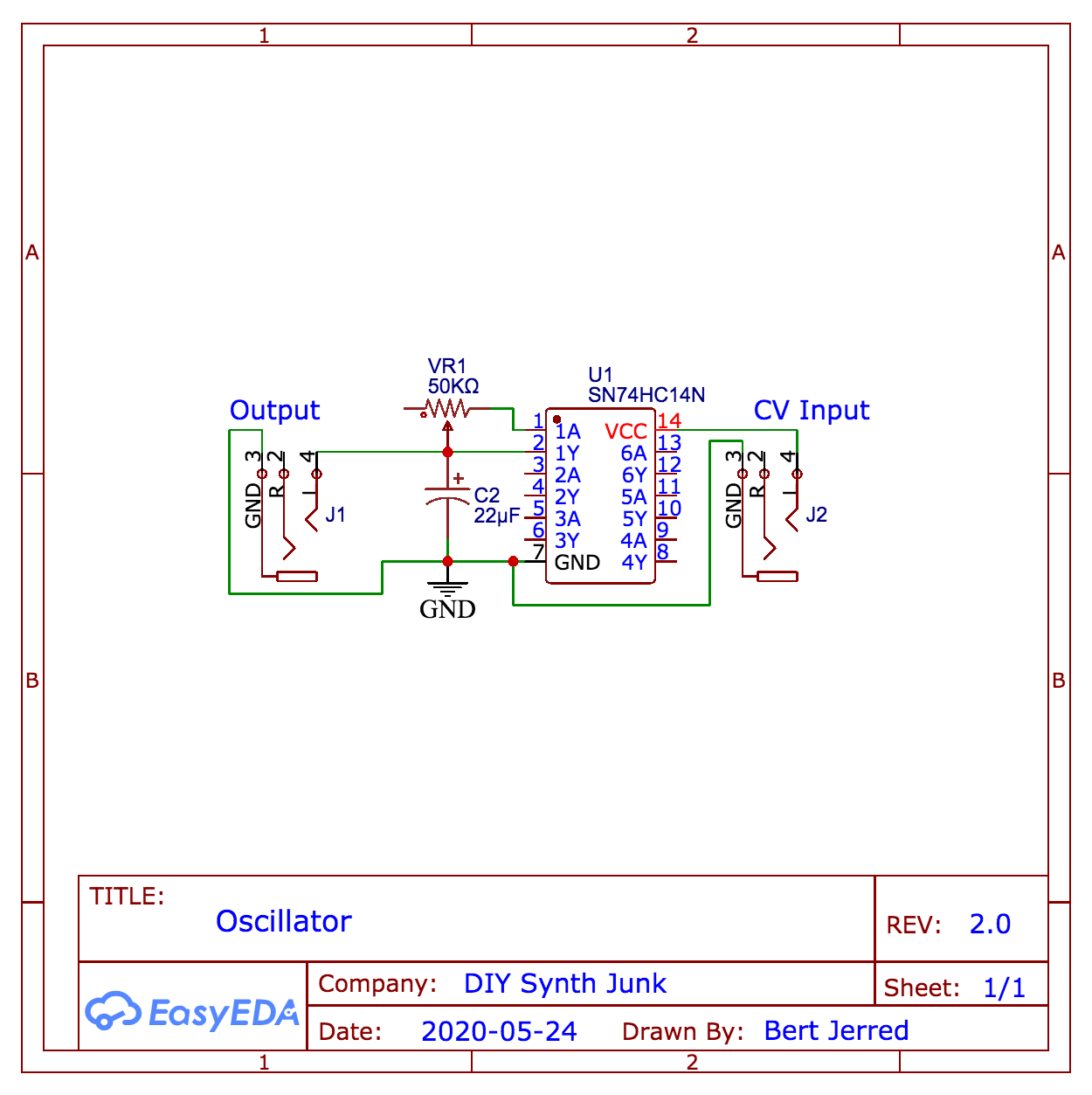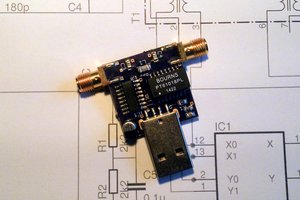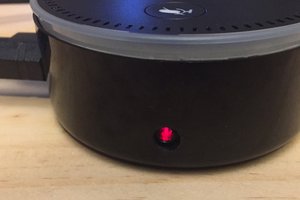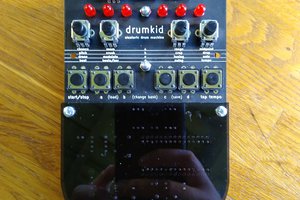
I've been shown that the typical oscillator implementation places the capacitor on 1A (not on 1Y, as I have done); and this is consistent with the SN74HC14N datasheet. I speculate that this was just an error of mine that I've unintentionally replicated... probably because interesting sounds were produced. Yet, I am told that this is problematic for a few reasons that I am endeavoring to understand. In any case, please proceed with such knowledge. Is this one of those, "Do as I say, not as I do (or have done)..." situations?

In any case, this is what I have done, and I imagine the fix is simple enough. I have yet to test my idea the correct way and compare. I think I will try to get images of the waveforms produced and include them here soon.
See updates regarding this issue on my page, "Walking it Back."

I chose to send signal through the tip of an audio jack and connect the sleeve to ground, but of course, you could do it the other way around... or, simulate stereo output by mixing things on the output end. I guess it depends: what's the polarity of your CV signal? Match that when you modify this design, and you should be good to go!
The datasheet for the IC I used can be found here: http://www.ti.com/lit/ds/symlink/sn74hc14.pdf?ts=1590357293516
Note also: there's room to play between input voltages and RC values. I've found that up to +5V in, a 50K pot, and anything between .22uF and 4.7uF 22uF will produce some interesting tones. Sounds best, however, when I plug the output into my computer and run something like GarageBand, where I can play with effects.
As for the PCB dimensions, I attempted to implement Eurorack-style specs (e.g., 3U https://intellijel.com/support/1u-technical-specifications/) and mounting hole spacings (http://www.doepfer.de/a100_man/a100m_e.htm) with the idea that this whole device would sit, as-is, exposed, on a rack. I don't actually have a rack - or any real Eurorack modules, for that matter - just thought I'd play with a "real" specification and get the feel for doing so.
I've really enjoyed (and been challenged by) all of the decision-making required to put such a simple thing together. A future version would follow the specs better (appropriate-sized PCB for appropriate-sized front panel) and correct the audio jack-to-potentiometer height issue...
 Bert Jerred
Bert Jerred


 Jenny List
Jenny List
 Daniel1111
Daniel1111
 Matt Bradshaw
Matt Bradshaw
 David Scholten
David Scholten
@Starhawk thanks - hey it's all good. Just remember, I'm new to so much of this. ;) But I've taken your advice and added more info, including schematics. Probably more updates to follow as I continue to learn.